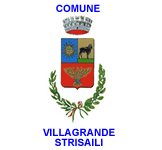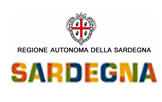 Origini
Origini
Origini
Vi sono numerose testimonianze sulle remote origini di tale lotta che veniva praticata nell'isola di Sardegna, al pari di altre forme competitive, alcune delle quali scomparse nella prima metà dell'Ottocento poiché ritenute pericolose.
Durante le feste campestri, cerimonie religiose, fiere di bestiame, riti collettivi agricoli e pastorali come mietitura, trebbiatura e tosatura del bestiame, era uno dei pochi giochi, con la morra, praticato dai giovani sardi. Latifondisti e allevatori talvolta si ritrovavano tra i servi abili lottatori, gherradores, esperti giocatori di Strumpa (o S'Istrumpa o Istrumpa) che diventavano motivo d'orgoglio personale quando gareggiavano nelle feste sopraccitate.
La somiglianza della lotta Sa Strumpa con le più note ”lotta libera” e “lotta greco-romana” fa ipotizzare delle origini comunque assai remote. Tale sistema combattivo, che può essere anche inglobato nelle due lotte internazionali, specialmente come metodo preparatorio per la tecnica di presa braccio-tronco, si affianca per età e tradizione a quello di altre lotte isolane meno note, alcune delle quali diffuse pure in Corsica e Scozia.
“Sa Strumpa” ha comunque origini molto remote. Alcuni studiosi l’hanno definita “archeologia vivente” questa tesi è sostenuta da un bronzetto nuragico ritrovato a Uta e dalla scoperta di circa trenta tra guerrieri arcieri, lottatori e pugili alti più di due metri scoperti nel 1974 a Monti Prama, nel Sinis risalenti all’VIII o VII secolo a.C. Per circa tremila anni “Sa Strumpa” era il gioco che animava le feste, le tosature, le baldorie dei giovani chiamati alle visite di leva, testimoniate da alcune foto d’epoca degli anni cinquanta.
Nei pochi minuti dell’incontro contava soprattutto lo spirito di appartenenza: nei cortili degli uffici di leva si combatteva in nome del paese, bisognava difendere l’onore. Non vi erano regole scritte, ciascuno sceglieva le mosse più congeniali e così nascevano regole aperte a tutte le interpretazione e applicazioni.
Di vincolante c’erano solo le posizioni di partenza. Si tratta di un tipo di lotta che si pratica partendo da una posizione definita che viene chiaramente indicata da un regolamento di gara: al via dell’arbitro, i lottatori si dispongono in piedi uno di fronte all’altro. La presa avviene portando un braccio sotto l’ascella e l’altro sopra l’omero-spalla dell’avversario; la guancia destra sfiora quella opposta, una mano impugna l’altro polso o anche l’altra mano dietro la schiena dell’avversario in modo da stringerlo saldamente. Non è consentita altra forma di presa e non è permesso combattere lasciando la presa e aiutarsi appoggiando le mani libere sull’avversario.
I lottatori si affrontano partendo in parità di condizioni: per vincere serviranno la forza, l’equilibrio e la destrezza. In realtà sa Strumpa significa squilibrare l’avversario facendo ricorso a qualsiasi tecnica di gamba, trazione, spinta frontale o laterale, sollevamento da terra, sgambetti, basta essere furbi e non perdere l’equilibrio. Più che la forza è la tecnica che deve fare la differenza, l’abilità, che in lingua sarda viene denominata “trassa” cioè l’astuzia concessa a chi sa dosarla bene senza farne la sua sola arma. La lotta si interrompe quando uno dei due lottatori cade a terra evitando così l’incattivirsi dello scontro. A questa lotta giocosa veniva riconosciuta una valenza educativa, i bambini e gli adolescenti crescevano nella convinzione che nello sport come nella vita non bisogna arrendersi davanti ad avversari più dotati di forza fisica, perché spesso ad avere la meglio era appunto l’abilità, “sa trassa”.
“Sa Strumpa” insegna la precisione e il rispetto rigoroso delle norme e chi bara è malvisto dagli stessi atleti e la sua vittoria non conta nulla, perché si tratta di persona di cui non si può fare affidamento. Vince chi è stato leale, coraggioso, chi ha dimostrato “trassa”, abilità e non ha mai tentato di ottenere la vittoria in modo scorretto. Il premio più grande è il rispetto da parte della comunità, verso chi ha agito con lealtà nel rispetto delle regole.
Origin
There are many testimonials on the remote origins of this struggle that was practiced in Sardinia, like other competitive forms, some which disappeared in the first half of the nineteenth century because it considered dangerous. During the holidays rural, religious ceremonies, exhibithion of livestock, agricultural and pastoral collective rituals like harvesting, threshing and mowing cattle, was one of the fewgames with the “morra”, practiced by the young Sardinian. landowners and farmers often find them selves between servants skilled wrestlers, gherradores, Strumpa experienced players which became a source of pride staff when competing in the aforementioned parties.
The similarity of the struggle with the most famous sa Strumpa “wrestling” and “greekroman fight” leads to the hypothesis of the origins, however, very remote. this system combative, wich can also be incorporated in the two international struggles, especially as a method of preparationfor the technique of taking the arm-trunk, for age and traditional alongside that of other lesser-known island struggles, some of wich are well spread in corsica and scotland. “sa Strumpa” still has very remote origins. some scholars have called “living archaeology”.
This thesis is supported by nuragic foud a bronze in uta and the discovery of some thirty warriors archers, boxers and wreslers more than two meters high discovered in 1974 in Prama mont in sinis from the eighth or seventh century bc. for about three thousand years, “sa Strumpa” was the game that animated the parties, the shearing, the reverly of the young men called to military service visits, evidenced by some of the vintage photos fifties. in the few minutes of the figth had above all the spirit of belonging: in the courtyards of the offices of lever fought in the name of the country, had to defend the honor. there were no written rules, each chose the move again congenial and so were born the rules open to all interpretations and applications.
There were only binding to the position of departure. It is a kind of struggle that is practiced from a position that is defined by a clearly identified regulation of procurement: at the start of the arbitrator, the wrestlers have stood facing each other. The outlet is carrying an arm under the armpit and the other on top fo the humerus-shoulder of the opponent, the right cheek touches the opposite one, a hand holding the other wrist or even the other hand behind the opponent so as to firmly tighten it.
It is not other form of direct allowed and not allowed to fight the power and help supporting leaving your hands free opponent. the deal with wrestlers starting on a equal footing: the will to win strenght, balance and dexterity. Actually knows Strumpa means unbalancing the opponent through the use of any technique of leg pulling, pushing front the side, lifting off the ground, tripping, just be smart and not lose balance. rather than force is the technique that should make a difference, the ability, in Sardinian language is called “trassa”, the cunning that is granted to those who dose it well without it as her only weapon. the fight is interrupted when one of the two wrestlers fell to the ground thus avoiding the vicious clash. in this fight was recognized a playfull education value, children and adolescents grew in the belief that in sports as in life we must not give in to opponents having a force physsical, because they often have the upper hand was just the skill, “know trassa” . “you know Strumpa” teaches accuracy and comliance strict rules and those who coffin is frowned upon by the athletes themselves, and his victory means nothing, because it is the person referred to you can rely on. player who was loyal, brave people who have demonstrated “drew”, skills, and has never attempted to achieve victory incorrectly. the biggest prize is the respect from the community, to those who have acted with honesty whitin the rules.





